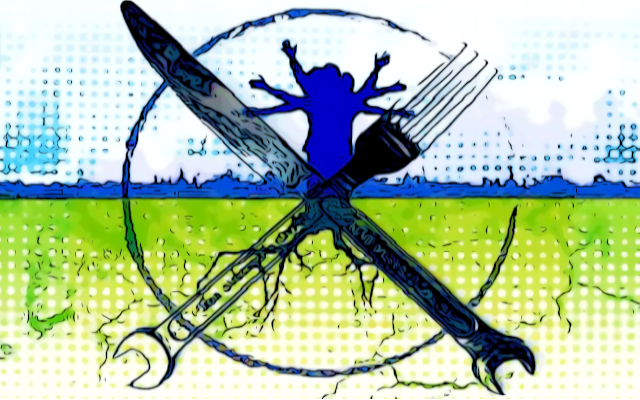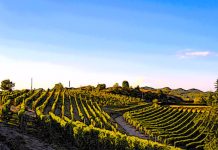A flour from the bark? It is just the latest in an increasingly vibrant and dynamic category. Among organic and
made in Italy
, whole grain and semintegral, Italian consumers vote health, nature and short supply chain.
Bark flour
The ‘bark flour’
is the idea of a
chef
of Udine, Stefano Basello. Un ingredient that is new but ancient at the same time, as it derives from Friulian traditions. In commemoration of the hundreds of thousands of trees torn from their soils by bad weather a few months ago, the enterprising chef from Friuli has vacuum-stored several varieties of bark and would now like to engage local bakeries to employ them in doughs. (1)
A ‘romantic’ project, in some respects. In which ‘bark flour’-obviously-has a particulate and symbolic role, which will, among other things, have to be considered in light of the new European Novel food regulation. (2) The flour and flour meal category, on the other hand, is already grappling with significant transformations. Guided by three keywords. Organic, Made in Italy, whole grain.
Organic and Made in Italy, the ideal couple
The Immagino observatory
by Nielsen-Gs1, LINK shows an increasing focus of Italian consumers on foods considered ‘health-promoting’ and ‘natural‘
, in thebroadest sense
.
The organic sector
continues double-digit growth, up 14 percent
the latest 2018 data. Thanks to the ‘democratization of organic‘
which the large-scale retail trade (GDO) has helped to bring about, with increased shelf offerings extended to the
discount stores
.
The choice of organic
comes not only from concern for the environment and animal welfare
, but also from the need to avoidexposure to pesticides
through food
.
The
Made in Italy
Is another magnet of current consumption. Italian ConsumAtors finally favor the short supply chain, for two essential reasons:
– Matures awareness of the role of purchasing choices on the economy of territories (#iovotocolportfolio),
– more confidence is placed in the safety of food and https://www.greatitalianfoodtrade.it/etichette/controlli-il-ruolo-dellamministrazione-sanitaria/ performed in Italy than in the ‘things(not always good) of the world’.
‘
‘Food and oxen in your own country
‘
Is thus the new motto. Which rests on a solid foundation, both economic and cultural. And it finds confirmation in the discouraging news about imported grains (and lentils) from cold countries – Canada firstly – where glyphosate and other agrotoxics are also used post-harvest. Where in Italy and Europe such practices – which increase the risk of chemical residues in food-are instead banned for years.
Galloping wholemeal, ‘palm oil free‘
Whole wheat
gallops on flour, pasta and baked goods. ConsumAtors are looking for foods naturally rich in fiber, which is beneficial for the gut and immune system. Nel only breakfast compartment, ‘Whole grain’ products recorded +14.2 percent growth (2018). And not surprisingly, on their labels, the
claim
‘
integral
‘ is the most widely used after the ‘
palm oil-free
‘. (3)
Palm oil has almost completely disappeared from products in Italy, with rare exceptions to Big Food brands (e.g., Ferrero, Kellogg’s, Mondelez, Nestlé, Unilever). Thanks to the battle started in 2014 by Great Italian Food Trade with The Food Fact, which culminated in the 6.5.16 Efsa scientific opinion on carcinogenic and genotoxic contaminants in refined palm. And to the courage of Coop Italia, which in the immediacy of that opinion removed from the shelf products under its brand name that contained such fat.
‘Semi-integral,’ the champion of flours
Wheat flour remains at the top of sales (>220 thousand tons/year). And yet, as much its finer millings as much as the coarser ones show a noteworthy decline (-7 percent the 0 and 00 types, -7.3 percent the whole wheat). It is time for the so-called ‘semi-integral’ foods, which combine versatility in cooking with appreciable amounts of fiber.
Type 2 flour
almost doubled its sales (+82.6 percent), followed by thypo 1 (+38.6%). Supply has been able to meet and accompany demand, thanks to transparent communication and markeda reduction in the retail price (-5.2% type 1, -12% type 2), which now stands at €2/kg.
On the front of the hard wheat, whole-wheat semolina breaks all records with formidable growth in sales (+247 percent) and retail price (+5.5 percent), which is now around €1.90/kg. La non-wholemeal semolina drops instead of 2.5% points. (4)
Marta Strinati and Dario Dongo
Notes
(1) V. The Republic 22.1.19
https://www.repubblica.it/sapori/2019/01/22/news/friuli_venezia_giulia_chef_stefano_basello_inventa_pane_dagli_alberi_farina_di_corteccia-216782895/
(2) See reg. EU 2015/2283
(3) Cf. Imagine Observatory, 2018/1. However, the ICQRF, the first designated authority for official public inspections of food labels, has yet to put an end to the unacceptable and widespread phenomenon of ‘whole-food fake’. For the due protection of consumers and fair competition in the marketplace
(4) Source Food, February 2018 (based on Nielsen data processing)









